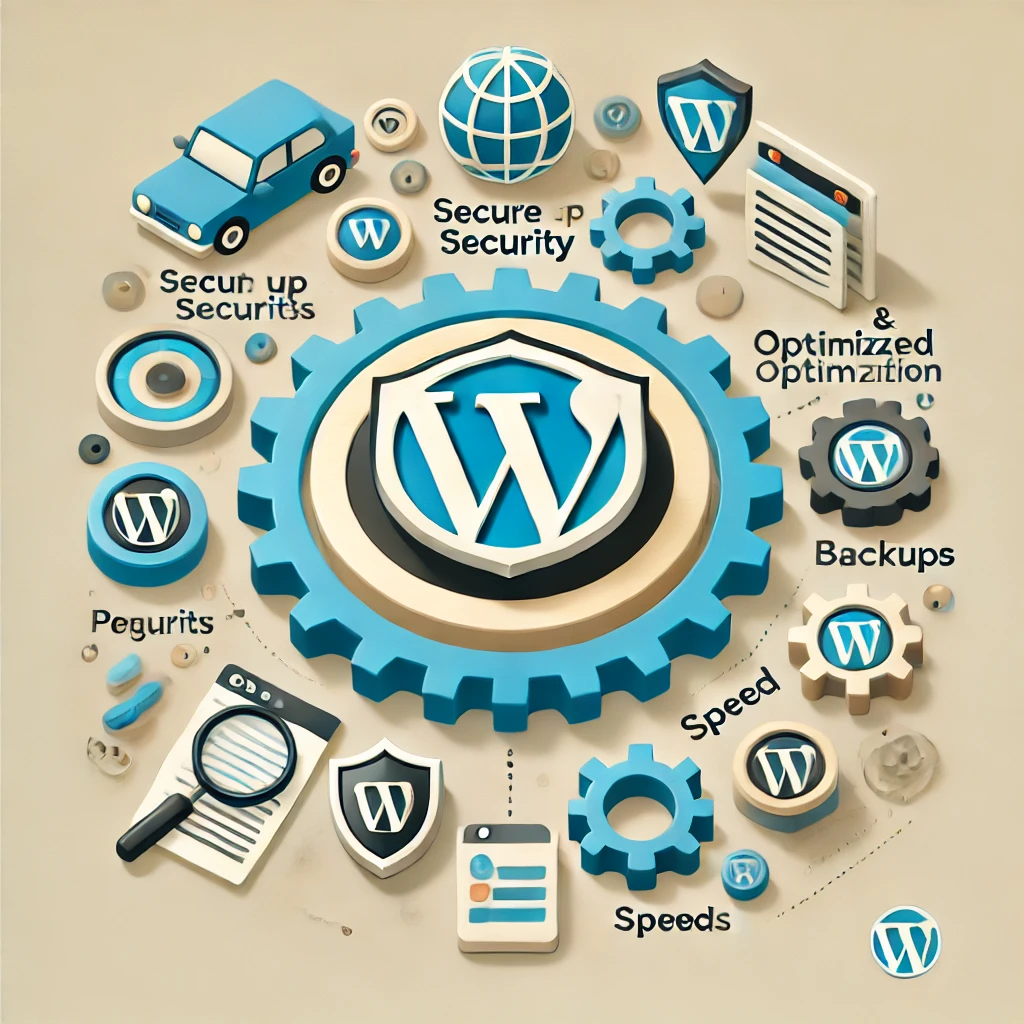
WordPress is one of the most popular platforms for building websites due to its flexibility and ease of use. However, to ensure your site is both secure and optimized for performance, there are several important steps you need to follow. This guide will walk you through the essential security measures, performance enhancements, and best practices for setting up a WordPress website.
1. Setting Up WordPress
a) Choose a reliable hosting provider
- Select a WordPress-optimized hosting provider like SiteGround, Bluehost, or WP Engine. Many of these services offer managed WordPress hosting, which includes security and performance features.
b) Install WordPress
- Most hosting providers offer one-click WordPress installation. If not, you can manually download WordPress from wordpress.org, upload the files to your server, and follow the installation instructions.
2. Enhancing Security
From the beginning, it’s important to focus on securing your website to protect it from hacks and malware.
a) Use a strong username and password
- Username: Avoid using “admin” as your username because it’s commonly targeted by hackers. Choose something unique.
- Password: Use a long, complex password with a mix of letters, numbers, and symbols.
b) Install a security plugin
- Recommended Plugins:
- Wordfence or iThemes Security: These plugins provide features like firewall protection, login attempt limits, malware scanning, and more.
c) Enable two-factor authentication (2FA)
- Two-factor authentication adds an extra layer of security by requiring a second verification step (e.g., via a smartphone app like Google Authenticator).
d) Change the WordPress login URL
- By default, your WordPress login page can be accessed via
yoursite.com/wp-admin. To make it harder for attackers, use a plugin like WPS Hide Login to change this URL to something custom.
e) Use SSL (Secure Sockets Layer)
- Install an SSL certificate to encrypt data between your site and its users. Many hosting providers offer free SSL through Let’s Encrypt. This also boosts SEO rankings.
3. Optimizing Performance
A fast website improves user experience and is crucial for SEO.
a) Use a caching plugin
- Caching stores a static version of your website, reducing the load on your server and speeding up page loading times.
- Recommended Plugins: W3 Total Cache or WP Super Cache.
b) Optimize images
- Large images can slow down your site. Use an image optimization plugin to compress them without sacrificing quality.
- Recommended Plugins: Smush or Imagify.
c) Use a content delivery network (CDN)
- A CDN distributes your website’s content across multiple servers worldwide, ensuring faster load times for visitors from different geographic locations.
- Recommended CDN: Cloudflare or KeyCDN.
d) Keep your WordPress, themes, and plugins updated
- Outdated software is one of the most common vulnerabilities. Regularly check for and apply updates to WordPress core, themes, and plugins.
e) Minimize the use of plugins
- Only install plugins that are absolutely necessary. Too many plugins can slow down your site and introduce security risks.
4. Backup Your Website Regularly
Regular backups ensure that if something goes wrong (e.g., a hack, plugin failure), you can quickly restore your website.
a) Backup Plugins
- Recommended Plugins: UpdraftPlus or BackupBuddy. These plugins allow you to schedule automatic backups and store them in remote locations like Google Drive or Dropbox.
5. Best Practices for Ongoing Management
a) Limit login attempts
- Hackers often try to gain access through brute force attacks by attempting multiple username/password combinations. Limit login attempts using plugins like Login LockDown or WP Limit Login Attempts.
b) Disable file editing
- WordPress allows you to edit theme and plugin files from within the dashboard. To prevent potential attacks, disable this feature by adding the following line to your wp-config.php file:
php
define('DISALLOW_FILE_EDIT', true);
c) Regularly scan your website for malware
- Use security plugins to perform regular malware scans and security checks. Wordfence or Sucuri Security are good options for this.
6. SEO Optimization
To help your website rank well on search engines, consider the following steps:
a) Install an SEO plugin
- Yoast SEO or Rank Math are great tools for improving on-page SEO, helping you optimize meta tags, sitemaps, and more.
b) Use clean URLs (permalinks)
- Navigate to Settings > Permalinks and choose a structure that uses post names, which is both user-friendly and SEO-friendly (e.g.,
yoursite.com/sample-post/).
By following these steps, you’ll ensure that your WordPress website is secure, fast, and optimized for both users and search engines. Regularly monitoring your site’s performance and security, along with keeping everything up-to-date, will help you maintain a robust and reliable online presence.
Happy website building!

